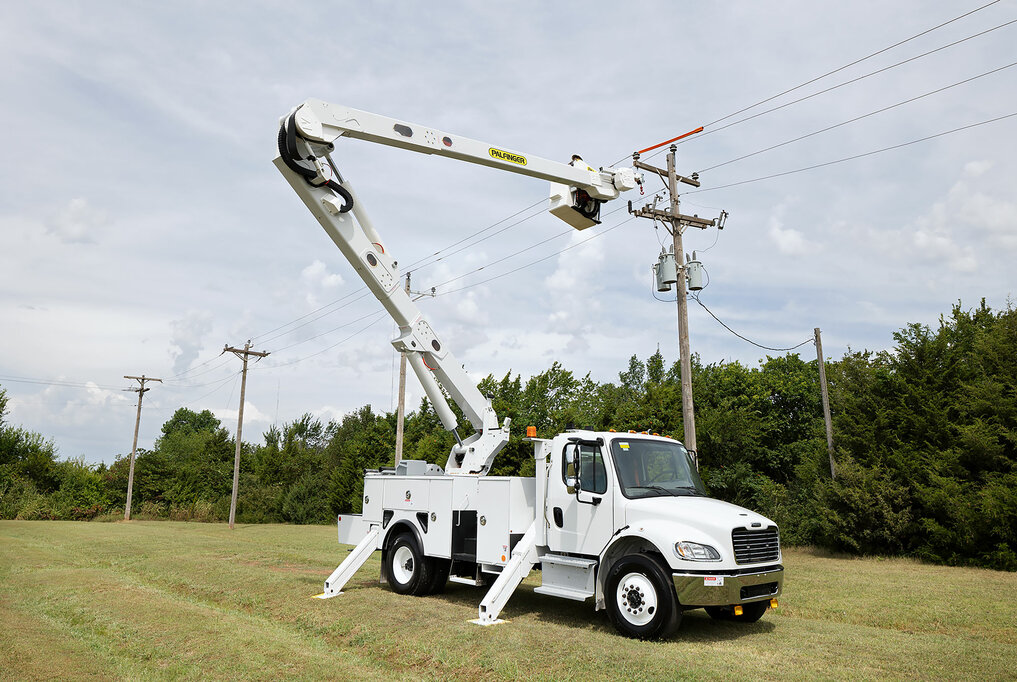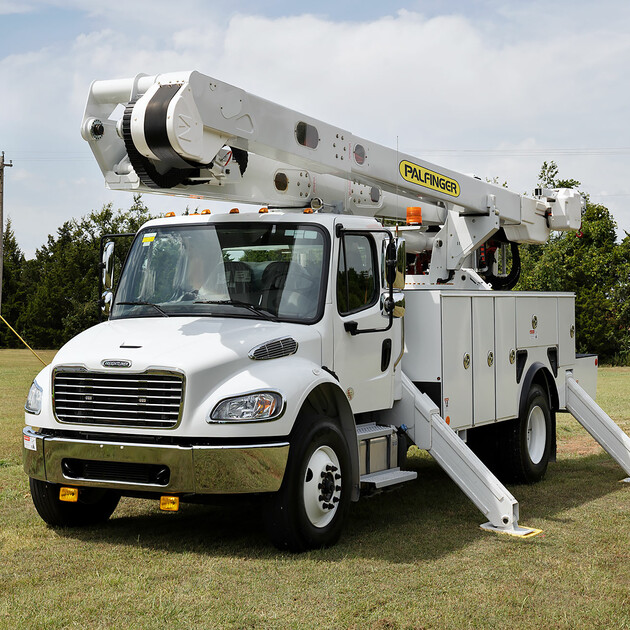
- Home
- News
Storm Response Readiness: 5 Keys to Always Being Prepared
By Chris Shallenberg, Outbound Product Manager Aerial Work Platforms, PALFINGER North America

Crews using bucket trucks have already been hard at work in many communities restoring power and communications and doing cleanup as the result of storms, but it remains to be seen how many hurricanes will make landfall in the United States this season. Regardless, countless companies – and their dedicated line crews – stand ready to respond, when needed.
Preparedness though, is not a once-per-year activity. For many operations managers, fleet personnel and utility professionals working on the frontlines of storm response, this is a year-round endeavor, as many of them deal with more than just hurricane-related cleanup. Repairs and cleanup because of tornadoes, floods, derechos, ice storms and more all require rapid response and sending crews into demanding and potentially dangerous work environments to get the job done.
Given this, making sure your equipment is always ready to always handle challenging work environments – no matter the time of year – is essential if quick response times and safety are important to your overall mission.
Here are five things you can do to make sure your equipment and people are ready for the next storm:
Make Safety a Top Priority
The aerial and body package of your bucket trucks should be designed with operator safety in mind, as harsh weather conditions can make for a dangerous workplace. Your equipment should be configured to help reduce slips, trips, and falls wherever possible. This includes having non-skid materials on all walking surfaces and ensuring workers always have places for three points of contact when working on the bucket truck.
Lighting is also important. We recommend trucks with 4-point or 6-point strobes and ample compartment lighting as a standard for maximum visibility at night, and in all types of inclement weather. All PPE and safety equipment can easily become damaged during storm work, so it should always be inspected thoroughly afterward and replaced, as needed.
Training is Always Important
Providing good, safe equipment is critical, but your crews should also be well-trained given the difficult working conditions they may encounter. At PALFINGER, we pride ourselves in offering bucket trucks that are easy to use, but it does not take away from the importance of proper training. Make sure operators are fully briefed on the equipment’s features and capabilities as well as its limitations. Remember, familiarization with the equipment is different from being properly trained, so have your crews trained by an OSHA-authorized trainer to ensure proper – and safe – use occurs.
Keep Well-Maintained Vehicles
At PALFINGER, we know the chassis that aerial devices are mounted on are the workhorses of cleanup and repair efforts. This is why we provide operators with a recommended checklist of items to inspect visually and physically prior to each use. In short, it is important to pay attention to things that ensure your equipment can perform when it is needed most. Examples of this include:
- BATTERY: One example is making sure your truck battery is operating at peak efficiency. We recommend doing battery health tests, including checking all connections and making sure the battery can easily start the vehicle and support all electrical accessories.
- TIRES: Tires should also be inspected closely, including any spares, plug kits and air compressors. Remember, your trucks may be out in the field for extended periods with no access to repair shops, so anything to keep them self-sufficient on the service front is important, as storms can leave debris on roads that can damage tires.
- MAINTENANCE SCHEDULES: Consistently follow your own internal preventative maintenance schedules, or whatever has been provided by the chassis manufacturer; and consider proactively shortening any recommended maintenance timeframes to help address problems early.
Enhance Your Platforms
Though most manufacturers offer similar base packages, there are several additions you can make to your bucket trucks that enhance the safety and/or work environment for your crews. For example, storage solutions can be added to accommodate commonly used accessories during storm work. This might include various grips and hand tools, along with chainsaws, ropes, hoists and additional forms of emergency safety equipment such as safety cones, flashlights, batteries, flares, winches, PPE and Personal Voltage and current detectors.
Additional truck-mounted lighting – both interior and exterior – is always an option to help facilitate better working conditions, as is adding additional batteries and/or an inverter. This allows you to charge batteries or run laptops, coffee makers, dryers, basic power tools and more.
Installing upgraded non-skid materials, like tread plate or grip strut, or positional flood lights are always good when it comes to creating a safer work platform for your workers, as can the addition of window guards for a truck’s back glass or brush guards on the front of the truck.
Plan for the Future
Taking care of immediate training and maintenance-related needs is always important. However, planning ahead is also critical, as the need for cleanup and repair is not going to end once hurricane season is over. As recent storms have shown, some cities impacted this summer have not kept up with infrastructure improvements, which has led to bigger problems than anticipated. Likewise, you need to make sure updates and improvements to your own fleet are not delayed, as you want to be certain your equipment is fully operational and able to deal with the outcomes of future storms.
When it is time to replace equipment, work with companies that have work-ready bucket trucks available and be sure to check availability and lead times when making purchasing decisions. Take time to also forecast your future crew-related needs, as it is important to have enough workers lined-up and fully trained to operate your equipment safely – well before the next round of storms call your crews into action.
Chris Shallenberg is the Outbound Product Manager for aerial work platforms at PALFINGER North America. He has worked in the utility equipment industry for 16 years, most of that time in sales operations and training. Through his involvement with aerial, body and derrick equipment in utility and tree care applications, he worked with all levels of custom truck specification and what customers need from their equipment in the field. He is passionate about developing and improving equipment to bring customers the solutions that they need to be safe and successful.







